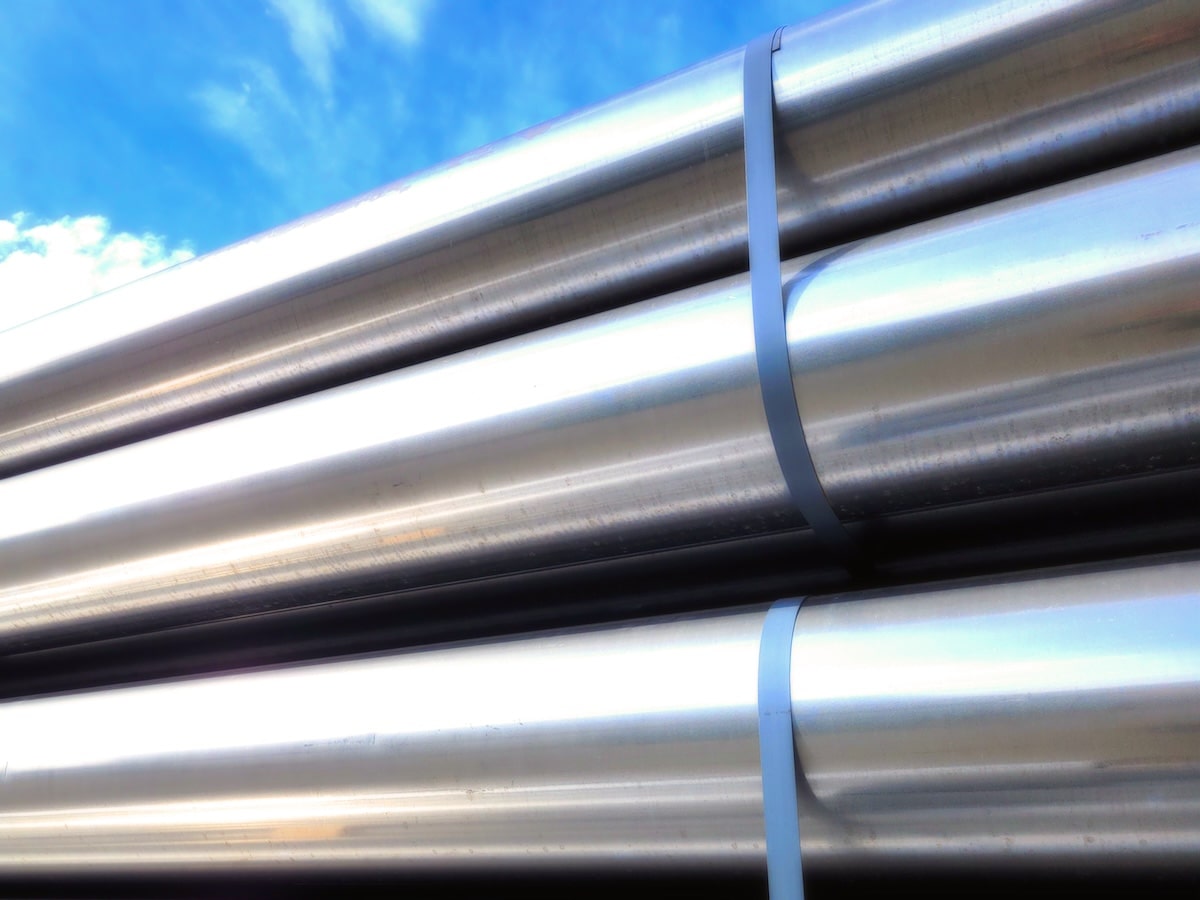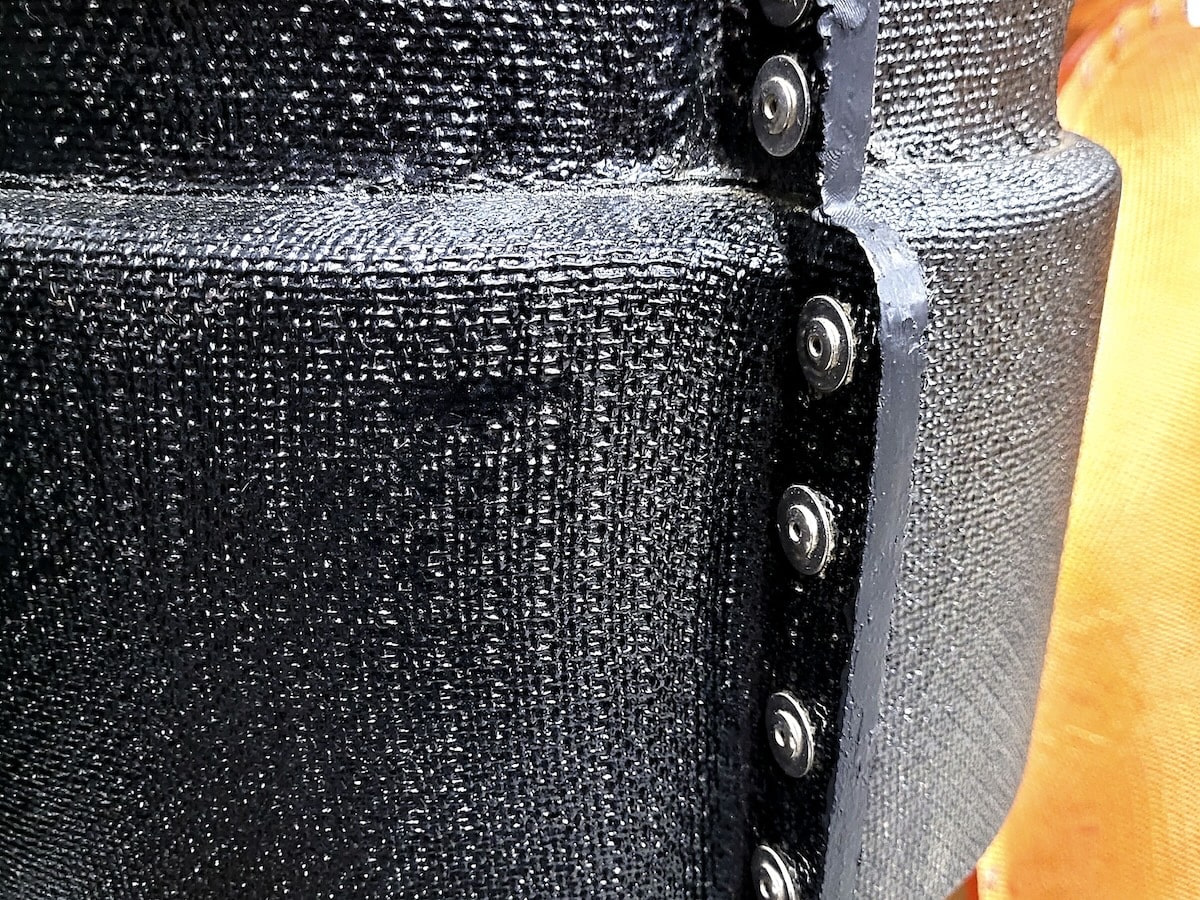Handling Heat
We have, in several previous blog posts, compared and contrasted two different materials or product categories. In October of 2022, for instance, we examined a variety of tubing types in a piece entitled “Stainless Steel Exhaust vs Aluminized Steel Exhaust“. And then in August of 2023, we published an article called “Exhaust Tubing & Parts: OEM vs Aftermarket“. You’ll be pleased to hear that it’s time for another showdown!
In today’s post, we’ll be exploring the pros and cons of exhaust blankets and composite shells. Both of these products represent attempts to prevent the high temperatures of exhaust system components from causing safety issues. When a mining truck’s operating fluids spray or drip onto the external surfaces of hot exhaust pipes, fires can result. And mine site conflagrations can be devastating. Not only do they endanger mobile asset operators, they can also jeopardize other personnel: blazes often produce toxic fumes, and exploding truck tires can travel hundreds of metres.
Infernos of this type have other costs as well. These include the loss of the truck itself, the loss of the payload it was carrying, the losses associated with subsequent downtime, and possibly the loss of other resources if the fire isn’t immediately contained. There can also be ancillary impacts such as negative publicity, fines, and increased insurance premiums. Clearly, truck fires are to be avoided if at all possible. And that’s why it’s important to carefully weigh the benefits and disadvantages of exhaust blankets and composite shells.
Exhaust Blankets – The Basics
Exhaust blankets are pieces of heat-blocking material that are wrapped around exhaust parts in order to act as a thermal barrier. When functioning properly, they prevent the surface temperatures of exhaust systems from rising above the flash point for oils, thus helping to reduce the risk of truck fires.
Exhaust blankets can often be purchased individually, or as part of a set designed for a particular engine or vehicle. Different exhaust blanket manufacturers use different materials in the various layers of their shielding. The goal, for all exhaust blankets, is to achieve maximum thermal lagging {or reduction of heat transfer}. Some exhaust blankets feature an embossed foil layer that allows convective cooling by way of an air gap.
Other units are fashioned with quick-fit springs that help the exhaust blankets hold a particular shape, thus making them easier to install. There are dozens of different companies fabricating exhaust insulation blankets, and they sell both standard and custom products. These include muffler blankets, junction blankets, tailpipe blankets, and many more.
Composite Shells – The Fundamentals
Although DBA Silencing does occasionally employ exhaust blankets, generally on custom applications, we’re far more likely to outfit components with our proprietary composite shells. Most of our exhaust components are encased in these rigid shells, which feature multiple layers of heat-resistant fibreglass material, as well as specialty exhaust insulation. In some cases, we powder coat our composite shells in order to boost their longevity.
DBA’s unique composite shells are extremely effective at moderating exhaust component surface temperatures. If you watch the video below, you can see one of our technicians placing his bare hand on a hot exhaust pipe protected by one of our shells. DBA Silencing is an OEM supplier for Liebherr Mining Equipment, and our industry-leading technology gives Liebherr a significant competitive edge.
Head To Head
Both exhaust blankets and composite shells are effective curtailers of temperature. Their exact performance will vary according to the circumstances of the situation. When it comes to durability, however, DBA’s composite shells come out far ahead. Although exhaust blankets are now much tougher than they used to be, they generally survive between three months and a year in the field. Composite shells typically last much longer, particularly if they’ve been powder coated.
Purchase price is another element of the equation to consider. It’s safe to say that fitting an exhaust system with blankets will involve a more modest outlay than insulating it with composite shells. If you factor in frequency of replacement, however, the costs may be more comparable.
Ease of installation also deserves some scrutiny. Historically, mine site mechanics have looked with disfavour on exhaust blankets. This is because, in the past, they tended to have fiddly fastening mechanisms. Progress has been made on this front but, as you’d expect, mechanics still prefer to work with components that have built-in shielding. Exhaust systems often need to be removed before engine work can commence, and it’s far simpler to unclamp an assembly with composite shells than it is to deal with all the fasteners on a set of exhaust blankets.
Exhaust blankets have also come a long way in terms of absorbency. They used to be known for soaking up oil, fuel, and grease. This would lead to sagging, and would compromise their effectiveness in a variety of different ways. Fortunately, modern exhaust blankets repel moisture to a far greater degree than their forebears, and are much safer as a result.
And The Winner Is
Although it’s a much closer matchup than it would have been ten years ago, we are ready to declare that composite shells retain their title. We are of course completely biased but we believe that, for all the reasons outlined in this article, composite shells are superior to exhaust blankets when it comes to managing the heat from mining truck exhaust parts such as turbos and manifolds. If you have questions about our composite shells, or the exhaust blankets we can offer, please feel free to reach out to us at 1-800-661-5886. You can also email us at [email protected]. We hope you enjoyed today’s bout!


